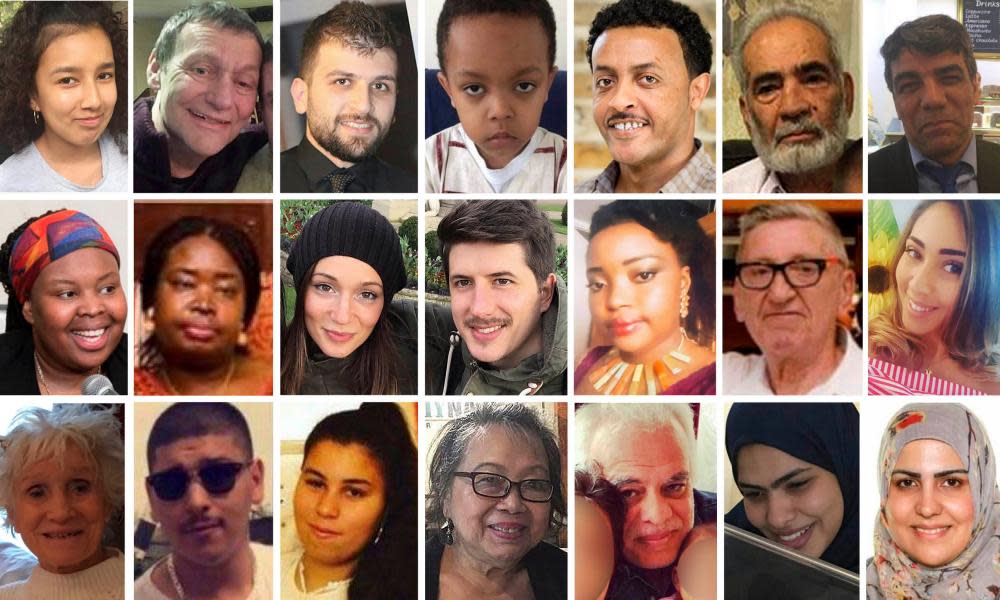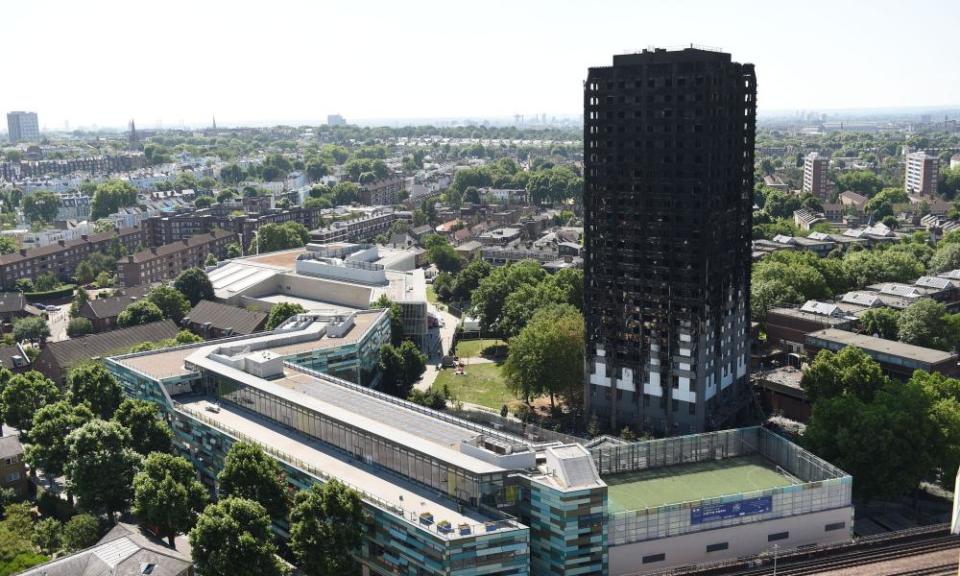Grenfell Tower inquiry to open with tributes to 71 victims of blaze

The public inquiry into the Grenfell Tower fire will open with individual portraits of and tributes to the 71 victims of the blaze, it has been revealed.
At a preparatory hearing before the main evidence sessions, which are due to start as early as mid-May, relatives and friends were told they could “memorialise their loved ones in any way they think best”.
Richard Millett QC, the lead counsel for the inquiry, said opening the public hearing with individual testimonials would mean that however technical the proceedings may become, “we will never lose sight of who these inquiries are for and why we are doing it”.
The tributes and personal portraits will be delivered as audio recordings, statements or in other formats.
Millett said that despite investigating 150 alternative locations, most close to the site of the fire in north Kensington, west London, the inquiry’s preferred site remained Holborn Bars in central London, near to barristers’ chambers and many law firms.
Bereaved survivors and residents – BSRs as they are known to the inquiry – and core participants will be given expenses to pay for their travel into central London from north Kensington and a subsistence allowance.
The inquiry has so far received 330,000 documents relating to the fire and is expecting ultimately to consider as many as 400,000.

There has been some friction in exchanges between the inquiry and the Metropolitan police investigation into possible criminal offences related to the fire. The police initially objected to the release of seven statements from firefighters who fought the blaze on 14 June 2017.
The inquiry was told that senior detectives eventually accepted assurances from the chair of the inquiry, Sir Martin Moore-Bick, that failing to disclose the material would impede the inquiry and agreed that it could be handed over to core participants.
There are 560 audio recordings of emergency 999 calls made on the night of the fire to the London fire brigade and other stations that took calls. “The material is in some cases distressing,” Millett said. “However, the subject of the inquiry is a mass fatality … and the evidence cannot be sanitised.”
Lawyers for many of the core participants raised concerns that the inquiry was not considering sufficiently the toxicity of the smoke produced by the blaze. “We know that at least five individuals have been treated at King’s hospital for cyanide poisoning,” Michael Mansfield QC said. “They may be just the tip of an iceberg.”
Expert reports on key aspects of the fire commissioned by the inquiry are due to be sent out confidentially to core participants in the coming weeks. Two more reports, on the role of the gas supply to the 24-storey tower and the question of whether water pressure was sufficient to fight the fire, are also under way.
There has been speculation that the initial fire could have been due to a power surge igniting electrical equipment. Millett said: “As the evidence currently stands, there’s nothing to suggest that any electrical surge played a causative role [in the fire].”
The inquiry heard that the Met police had been allowing relatives and survivors, as well as experts, to go back into the tower on occasions, although a lawyer for the police stressed that it remained a crime scene.

 Yahoo News
Yahoo News 
